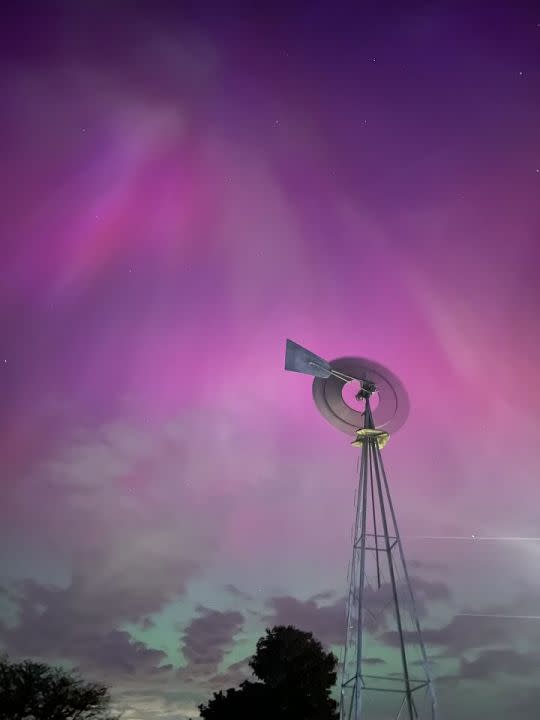Weather Wednesday: Space weather and the Northern Lights
LANSING, Mich. (WLNS) — The historic geomagnetic storm that led to the beautiful display of the northern lights this weekend is starting to wane. Individuals as far south as Hawaii and even Louisiana had the chance to see the northern lights.
While the weather isn’t directly related to the northern lights, space weather is.
Space weather is basically the activity on our sun’s surface which can affect not only the earth but also the rest of our solar system. Sometimes if solar activity is strong enough it can cause damage to satellites and cause some issues with electronic technology here on earth.

The sun is always expelling gas and other particles in space. The stream of this stuff is called the solar wind. If the gas and particles come from the outer atmosphere of the sun it is known as coronal mass ejection (CME). With the help of solar wind, the particles head straight to earth, we are protected from the majority of it thanks to our magnetic field however a few particles get through and head to the weakest point – our north and south poles.
These particles interact with the gases in our atmosphere, which causes the northern lights. Different gases give off different colors when they meet heat or other elements, oxygen makes red and green light and nitrogen makes the blue lights we see.
You might have tried to go out and see the northern lights this weekend and were disappointed when it wasn’t as vibrant as the pictures you see on the internet. They were there, it’s just that the phones and cameras are more sensitive to light than our eyes. the northern lights can tend to be a little faint and lighter and our eyes are not able to see faint colors easy at nighttime
So, the next time we have the chance to see the northern lights go outside and try these tips: first try to get away from light pollution, then get a steady surface or even a tripod to make sure your shot is steady. next make sure you are looking in the right direction, once you are ready take your phone or camera out and adjust the settings to night mode or adjust the exposure time to about 3 to 10 seconds. Don’t forget to enjoy the moment as well! As always if you get any weather or astronomy-related pictures don’t forget to send them to us.
Copyright 2024 Nexstar Media, Inc. All rights reserved. This material may not be published, broadcast, rewritten, or redistributed.
For the latest news, weather, sports, and streaming video, head to WLNS 6 News.
